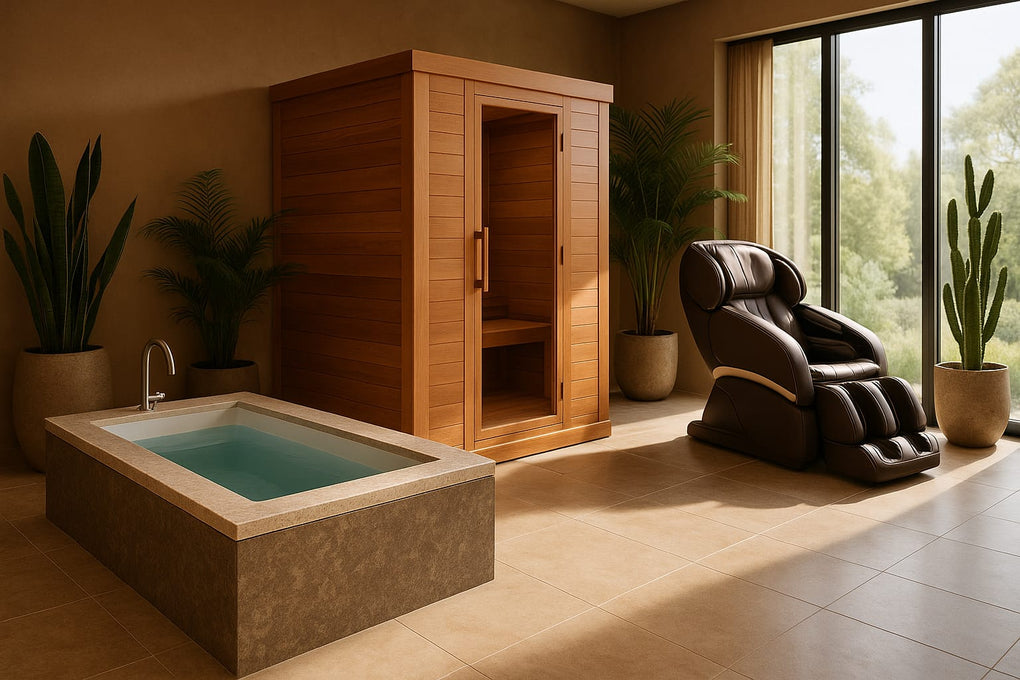Traditional vs Infrared Saunas: Which Is Right for You?
Saunas have been a part of wellness culture for centuries. Their rise in popularity is due to the numerous health benefits they offer. As you consider adding a sauna to your home, it’s vital to understand the differences between traditional and infrared options. Each has unique advantages, which can greatly influence your choice. This post will explore the luxury home sauna benefits and help you decide which type is best for you.
What is a Traditional Sauna?
A traditional sauna, often referred to as a Finnish sauna, is heated using either a wood stove or electric heater. These saunas maintain high temperatures by generating steam, creating a humid environment. Common materials, like cedar or pine, are frequently used for construction. Wood types not only affect durability but also influence the sauna experience through their scent and heat retention.
The heating mechanism in traditional saunas uses the principle of hot rocks. Users pour water over heated stones to produce steam, raising humidity levels. This combination of high heat and steam is what typically defines the traditional sauna experience.
What is an Infrared Sauna?
An infrared sauna differs significantly from the traditional option. Instead of heating the air around you, it uses infrared panels to emit light directly absorbed by the skin. This results in a more targeted heating experience, with temperatures generally lower than those in traditional saunas, usually around 120°F to 140°F.
There are three primary types of infrared saunas: near, mid, and far infrared. Near infrared saunas focus on promoting skin health and healing with shorter wavelengths. Mid infrared provides comprehensive muscle recovery benefits, while far infrared penetrates deeper into the tissues, offering significant health benefits.
Traditional Sauna Benefits
Traditional saunas are known for their classic benefits that date back centuries. One of the most notable advantages is detoxification. The heat induces sweating, which helps eliminate toxins and impurities from the body.
Additionally, relaxation and stress relief are essential components of traditional sauna usage. The warm, humid environment encourages a calm and soothing atmosphere, which can help reduce stress levels. Moreover, these saunas foster a social experience. People often gather in a traditional sauna, enhancing the communal spirit.
Infrared Sauna Benefits
Infrared saunas offer their own unique set of benefits. One significant advantage is deeper tissue penetration. The infrared heat can penetrate as much as 1.5 inches into the skin, promoting improved circulation and easing muscle tension. This makes infrared saunas a great tool for those seeking muscle recovery through saunatherapy.
Another remarkable property is that infrared saunas operate at lower temperatures. This can make lengthy sessions more comfortable, allowing users to enjoy the benefits of prolonged relaxation without feeling overwhelmed by heat. Overall, the range of infrared sauna benefits is impressive, particularly for those who prioritize therapeutic effects.
Comparing Experience and Comfort
When considering the experience and comfort levels, temperature and humidity play crucial roles. Traditional saunas can reach much higher temperatures, often exceeding 180°F, with a moist, steamy atmosphere. Conversely, infrared saunas maintain lower temperatures without steam, creating a different comfort level that may be more appealing to some users.
For longer sessions, infrared saunas might offer a more comfortable experience, especially for those sensitive to heat. This is key for anyone planning to spend extended time in a sauna, as you may find yourself able to relax better in an infrared environment without excessive heat stress.
Best Sauna for Home Use
Choosing the best sauna for home use largely depends on your individual needs. Several features should be considered, such as size, power source, and design. Traditional saunas typically require more space and may involve higher installation costs compared to compact infrared options.
When evaluating pros and cons, traditional saunas often have lower operating costs but require more maintenance due to wood care and the heating mechanism. On the other hand, infrared saunas are easier to install and maintain, often featuring a sleek, modern design that fits seamlessly into contemporary homes. However, their initial cost might be higher, depending on the model.
Making Your Decision
When choosing the right sauna, several factors must be taken into account. Your lifestyle, health goals, and personal preferences will shape your choice. If you value relaxation with a social aspect, a traditional sauna might be fitting. On the other hand, those focusing on therapeutic benefits may find infrared saunas more suitable.
Ultimately, the luxury home sauna benefits you seek will guide your decision. Both types offer a range of advantages, enhancing relaxation, health, and well-being in your everyday life.
Conclusion
In conclusion, understanding the differences between traditional and infrared saunas is crucial for making an informed choice. Each type has unique benefits that can enrich your wellness routine. At My Luxury Home Spa, you can explore these options and imagine designing your perfect spa at home. Embrace the wellness benefits of a sauna and transform your everyday relaxation into a luxurious experience.







Leave a comment